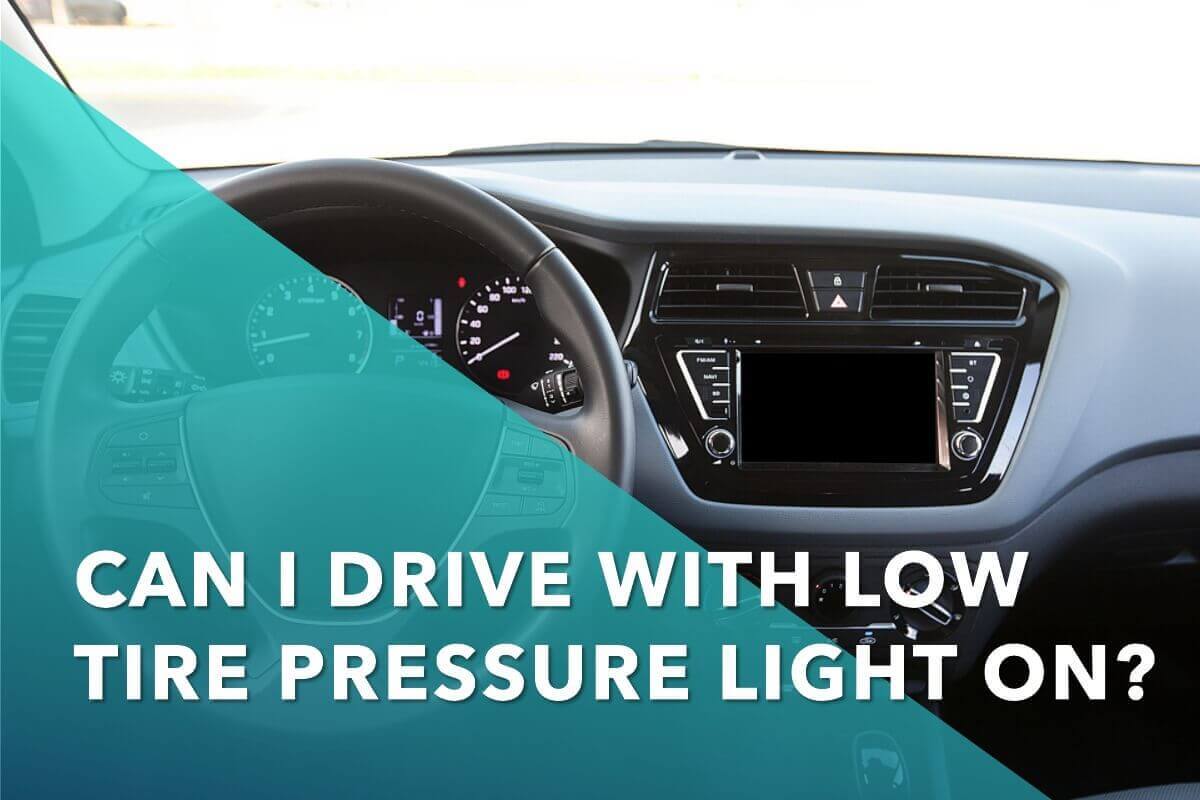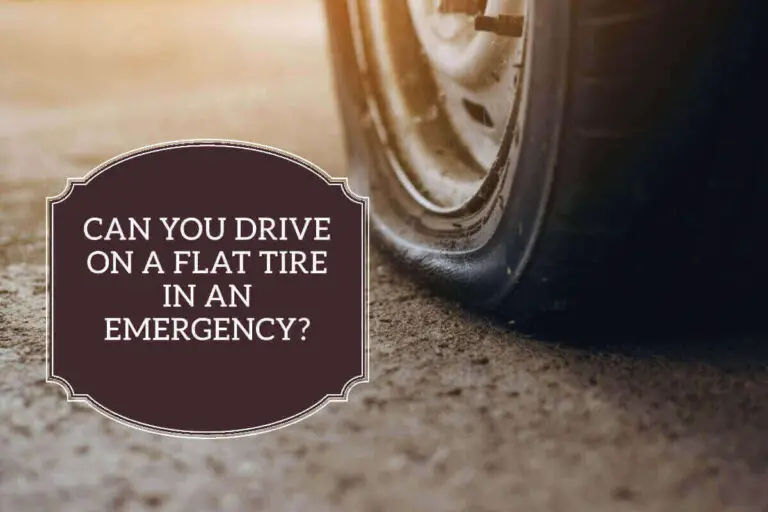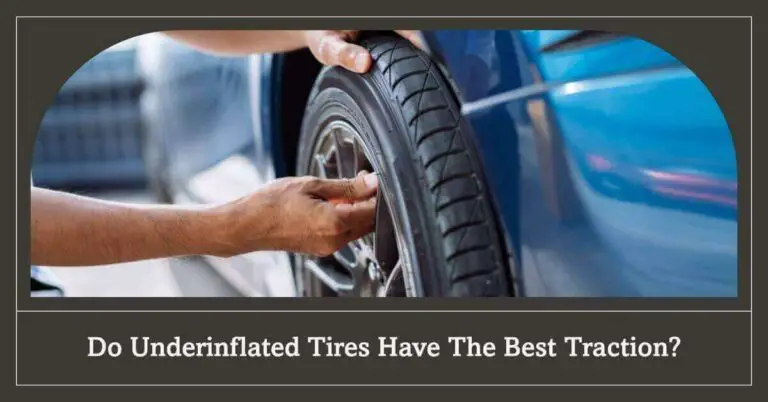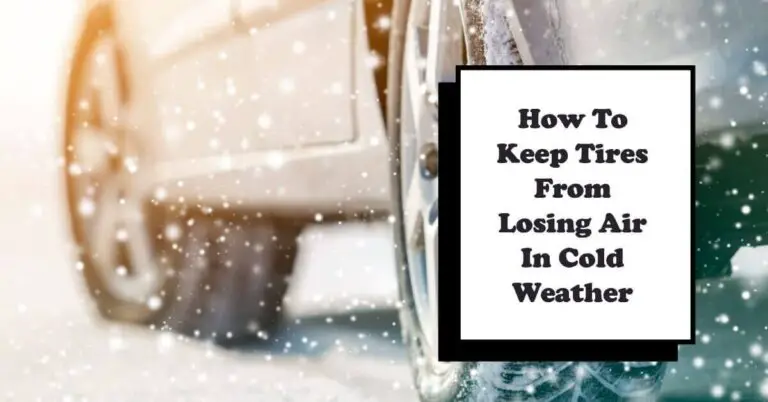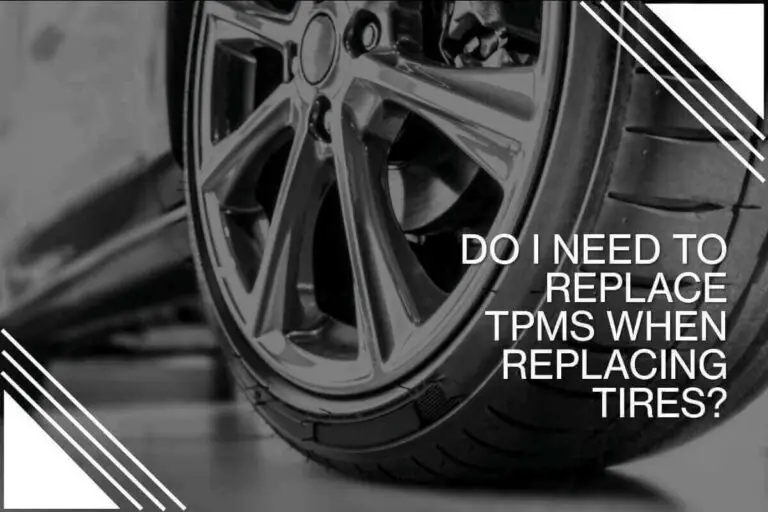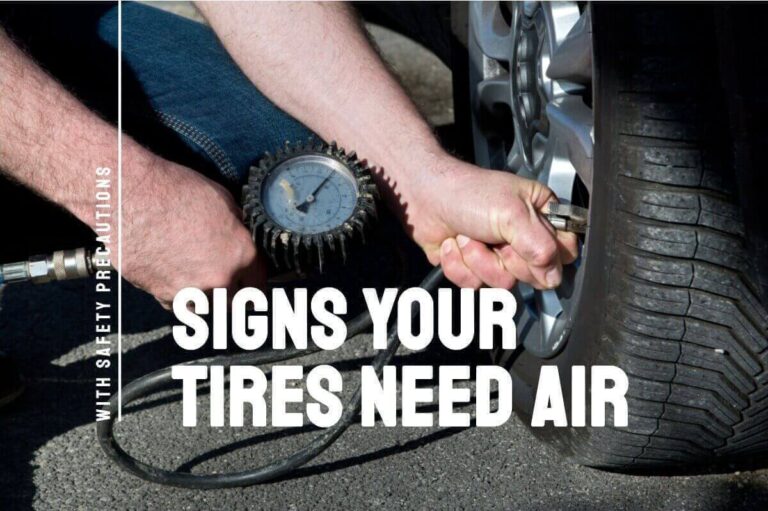Maintaining proper tire pressure to keep your car running smoothly and safely is important. So, what happens if you forget to check your tires and the Low Tire Pressure light comes on? Can you still drive, or do you need to pull over immediately?
Let’s discuss in detail how you can drive, how long you can drive with a low tire light on, and the importance of maintaining proper tire pressure.
Can I Drive With Low Tire Pressure Light On
The weather is getting colder, and the roads are getting icier. You’re driving along, and suddenly you see a warning light on your dashboard. Now you’re wondering, can I drive with low tire pressure light on?
Here’s what you need to know: if your tire pressure light is on, one or more of your tires is 25% or more below the recommended inflation pressure. It can seriously affect the handling of your vehicle, making it more difficult to control on slippery roads. It can also cause premature wear on your tires.
If you can’t get to a service station right away to inflate your tires, you can do a few things to help improve the situation.
- Avoid hard braking and sudden turns.
- Drive slowly and carefully until you can get to a service station.
This way, you can avoid having a blowout. Make sure you know the recommended tire pressure for your vehicle and check it regularly to make sure that your tires are properly inflated.
How Long Can You Drive With The Tire Light On
It is never advisable to drive with the low tire pressure light on. Doing so can put you at risk for a blowout or other serious problems. If you must drive with the low tire pressure light on, it is best to do so only for a short distance and at a slow speed. It will help minimize the risk of any problems.
It is safe to drive for at least 10 minutes at speeds over 30 mph with the Low Tire Pressure light on, as long as you keep an eye on the vehicle’s gauges. However, getting the problem fixed as soon as possible is best.
The Risks Of Driving With Low Tire Pressure
We cover the risks of driving with low tire pressure given below:
- While ignoring the low tire pressure light on your car’s dashboard may be tempting, doing so can be risky.
- When you drive with low tire pressure, you will experience reduced fuel efficiency, decreased handling, and increased tire wear and tear.
- The smallest drop in tire pressure can lead to a blowout in extreme circumstances.
- Make sure you check your tires as soon as you spot a low tire pressure light.
- If you need help checking your tire pressure properly, most gas stations have air pumps that can help you out.
- Keeping your tires inflated is an important part of maintaining your car and keeping yourself safe on the road.
The above points are only a few of the many reasons why it’s important to keep your tires properly inflated.
How To Overcome The Risks Of Driving With Low Tire Pressure
Driving with low tire pressure is a risky proposition. Here are some tips on how to overcome the risks:
- Check your tires regularly. It includes checking the air pressure and tread depth.
- If you drive with low tire pressure, slow down and avoid sharp turns.
- Pull over as soon as possible and inflate your tires to the proper pressure.
While driving with low tire pressure, you can stay safe by following these simple tips.
How To Check Your Tire Pressure
It is recommended that tire pressure be checked once a month and before long trips by National Highway Traffic Safety Administration. It only takes a few minutes to check your tire pressure.
A tire gauge is needed to check your tire pressure. Most petrol stations and auto parts shops carry one. Once you have a gauge, locate the valve stem on your tires. The metal part sticks out of the tire and has a small cap on it. Press the gauge onto the valve stem after removing the cap.
Related: Light is Still On After Adding Air?
You will hear a hissing sound as air escapes from the tire. You’ll receive a readout in psi from the gauge (pounds per square inch). Psi recommendations for your vehicle can be found in the owner’s manual or on a label inside the driver’s side door. Compare this value to that.
How To Inflate Your Tires
It’s wintertime, and the roads are icy. Your car starts to slip and slide all over the place. Here are a few tips on how to inflate your tires so you can avoid a dangerous situation:
- You’ll need to find your car’s recommended tire pressure.
- Usually, it is noted on a sticker inside the driver’s door or in the owner’s handbook.
- Once you know the proper pressure, use a tire gauge to check your current tire pressure.
- If it’s low, it’s time to inflate your tires.
- You’ll need an air compressor or a can of compressed air to inflate your tires.
- If using an air compressor, connect the hose to the tire’s valve stem and start the machine.
- Make sure that the compressor is set on low. You’ll hear a hissing sound as air enters the tire.
- Stop when the hissing becomes louder, and then switch off the compressor.
Don’t Rely Solely On Tire Pressure Monitoring Systems
Tire pressure monitoring systems (TPMS) are designed to alert drivers when their tires are low on air. However, these systems are not foolproof and should only be relied upon to prevent tire problems.
There are several reasons why TPMS may need to be fixed. For example, the sensors may become detached from the tires, or the batteries may die. The tread and sidewalls of the tires are not monitored by the TPMS; only the tire pressure is.
Drivers should regularly check their tires for proper inflation and wear. If the TPMS light does come on, it should be treated as a warning sign, and the tires should be inspected as soon as possible.
Importance Of Maintaining Proper Tire Pressure
It might be frightful when the low tire pressure light on your car turns on. You may wonder if you can continue driving or need to pull over immediately. While getting the problem fixed as soon as possible is important, you can usually keep driving for a little while.
- Maintaining adequate tire pressure is crucial for a number of reasons.
- It helps improve gas mileage.
- Properly inflated tires last longer and provide a smoother ride.
- It increases safety by helping prevent blowouts and flats.
If you do have a low tire pressure light come on, don’t panic. Check your tires to see how low they are, and then add air until they are at the proper level. Consult your owner’s handbook or the sign on your driver’s doorjamb for guidance on how much air to add.
Conclusion – Drive With Low Tire Pressure
If your tire pressure light is on, avoid driving if possible. Driving with low tire pressure can damage your tires and lead to a blowout. It can also negatively affect your gas mileage and handling. If you must drive with the low tire pressure light on, be sure to go slowly and avoid any sharp turns.
If you need help filling up your tires, ask a friend or a professional at a nearby gas station. In order to drive safely, it’s crucial to check that your tires are properly filled.
I hope you found this article on “Can I Drive With Low Tire Pressure Light On” useful. Feel free to post any comments, questions, or worries in the space provided below.
FAQs
Is it illegal to drive on a flat tire
It is illegal to drive on a flat tire in most states. If you have a flat tire, you should pull over to the side of the road and change it. Driving on a flat tire can damage your car’s suspension and make it difficult to control.
What happens if I ignore my low tire pressure warning light?
If you ignore your low tire pressure warning light, you could end up with a flat tire or blowout. It could cause you to lose control of your vehicle and have an accident. It’s important to keep an eye on your tire pressure and address any issues immediately.
What is a dangerously low PSI for tires?
A dangerously low PSI for tires is anything below 20 PSI. It can lead to a blowout or loss of control of the vehicle.
Is low tire pressure light urgent?
Yes, the low tire pressure light is an urgent warning. You should stop and check your tires as soon as possible. If you continue to drive on low tire pressure, you risk damaging your tires and causing a blowout.
What is the first thing to do when a low-pressure warning comes on?
If you’re driving and a low-pressure warning comes on, the first thing to do is to pull over and turn off the engine safely. Then, check the tire pressure and inflate the tires as needed. If the problem persists, call a tow truck or roadside assistance.
How low can your tire pressure be before it pops?
There is no definitive answer to this question as it depends on several factors, such as the type of tire, the amount of weight on the tire, and the temperature. However, most experts agree that you should not let your tire pressure drop below 20 psi.

